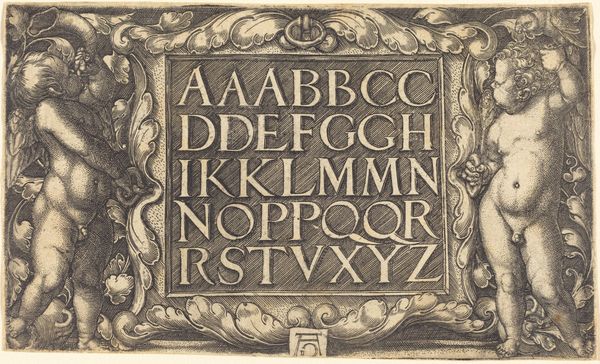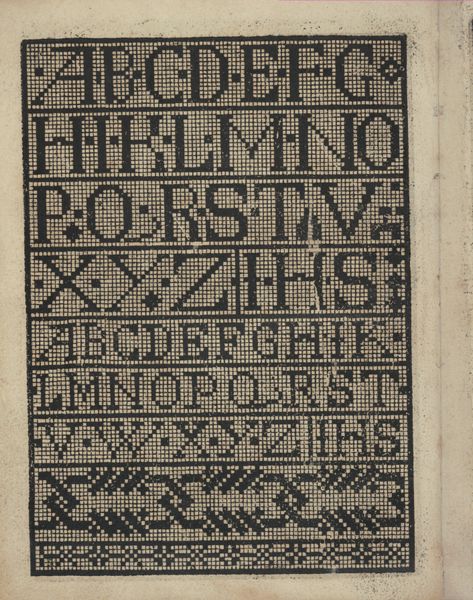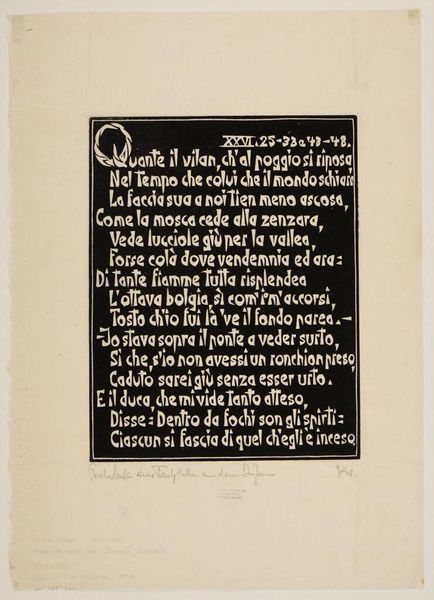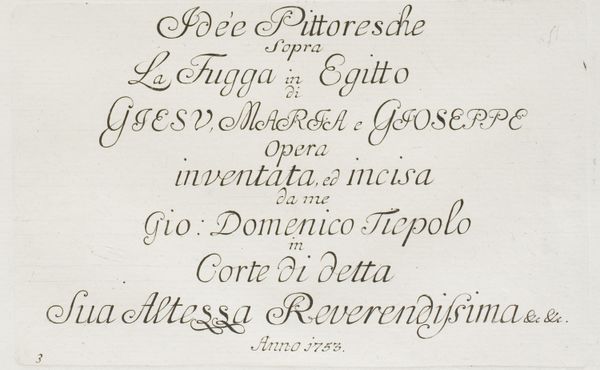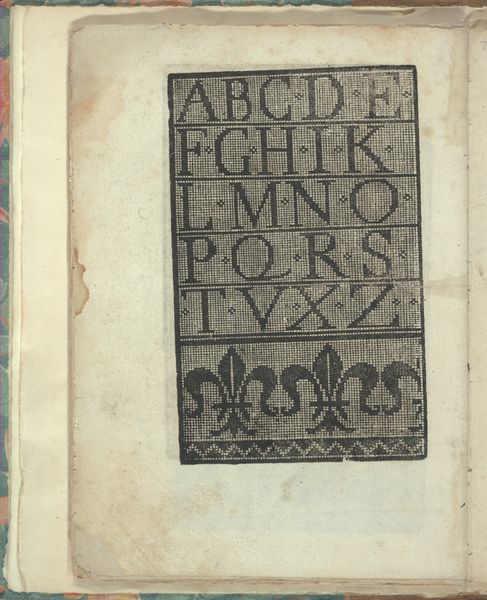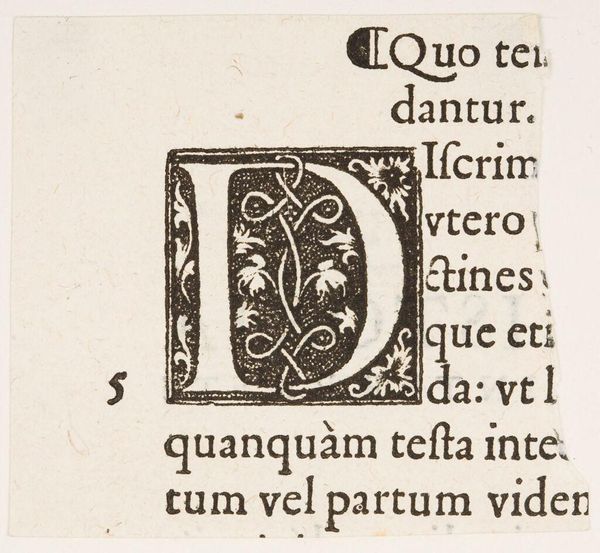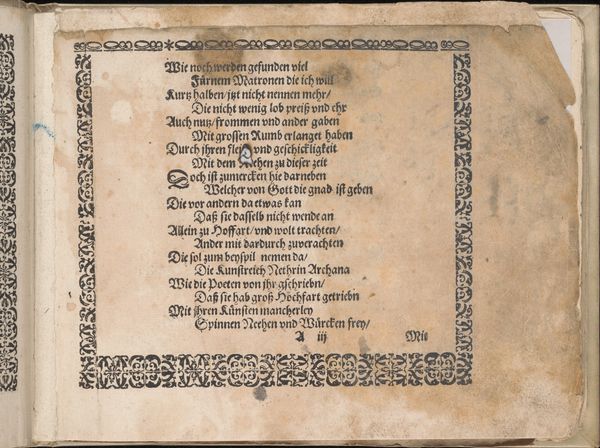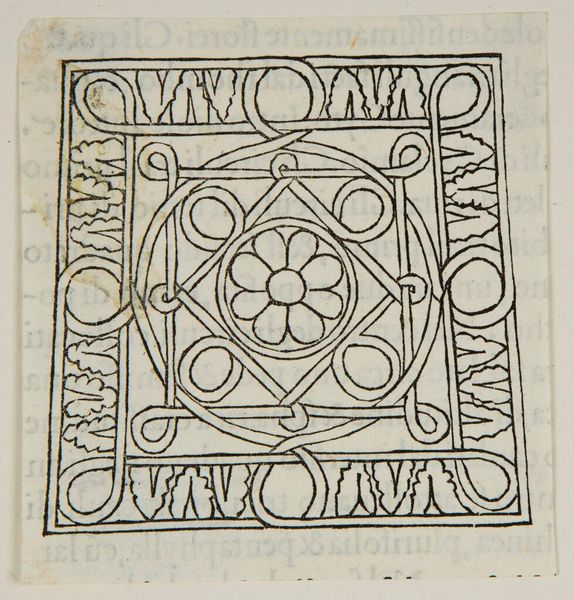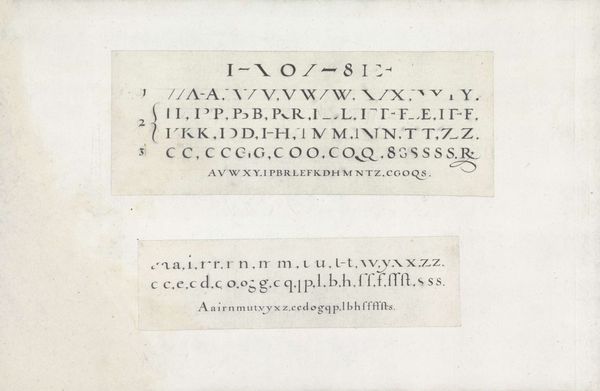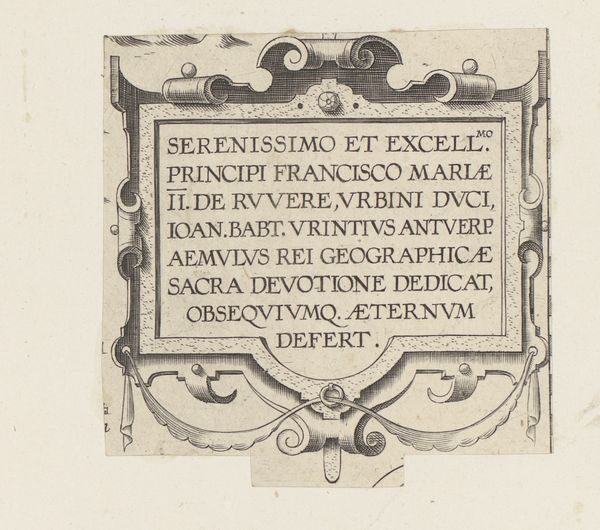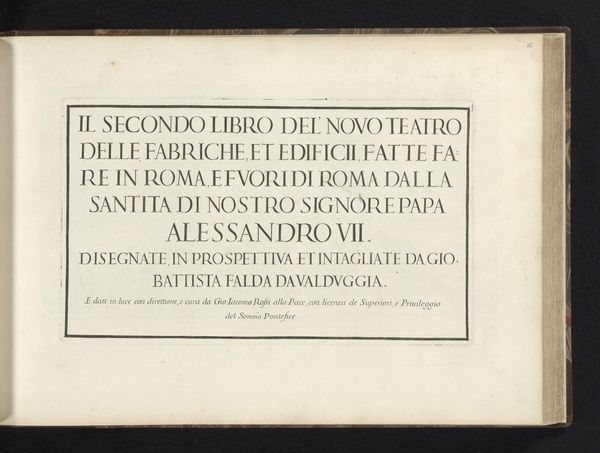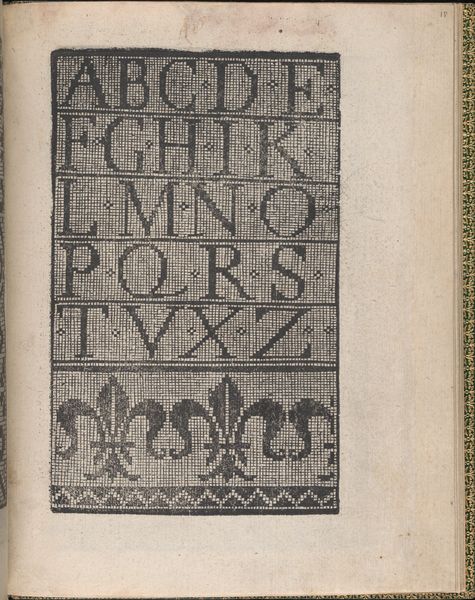
graphic-art, print, engraving
#
graphic-art
# print
#
text
#
engraving
Dimensions: height 320 mm, width 425 mm
Copyright: Rijks Museum: Open Domain
Curator: Welcome. Before us is a 1646 engraving by Adriaen Matham. Though titled "Het paleis van de sultan van Marokko," which translates to "The Palace of the Sultan of Morocco," this particular work appears to be a text page from that series, showcasing a range of calligraphic styles and letterforms, found here at the Rijksmuseum. Editor: Immediately, I am struck by its architectural presence. Each line of text feels like a monumental inscription, an echo of ancient Roman tablets perhaps. The stark contrast, white letters against solid black grounds, further accentuates this feeling. Curator: That's a keen observation. We should unpack Matham’s wider context. It is crucial to understand his positionality as a European artist depicting the "Orient," and the legacy of colonialism embedded within these representations. How does this graphic work of lettering support, perhaps unwittingly, or challenge those structures? How might it engage in orientalist fantasies? Editor: Well, text itself holds inherent power, doesn't it? Think of the Egyptian hieroglyphs, Norse runes. Letterforms gain symbolic heft over time. Consider the font choice here. To me, it invokes a sense of formal declaration. Yet, is there something also sterile about its even spacing? It reads like an edict rather than intimate communication. Curator: Precisely. The very act of inscription implies authority, claiming ownership of knowledge and defining boundaries – geographic, cultural, social. To appreciate Matham's project as a cultural artefact, we should read it critically through the intersecting lenses of colonial power, historical bias, and artistic intent. The text, divorced from imagery, lays bare the power dynamics implicit in representing "other" cultures. The careful lettering itself mirrors the imposed order, a European lens trying to tame an 'exotic' subject. Editor: That's a potent perspective. Ultimately, this isn't just a beautifully rendered inscription; it's a small fragment brimming with cultural encoding. Curator: Indeed, this calls into question whose voice, or rather, whose font, prevails. Editor: So true. And this invites us to examine whose story gets told and, equally vital, how.
Comments
No comments
Be the first to comment and join the conversation on the ultimate creative platform.
